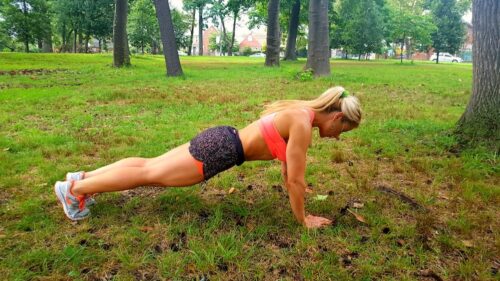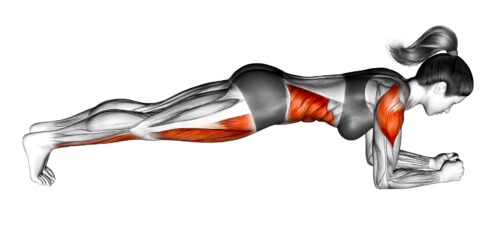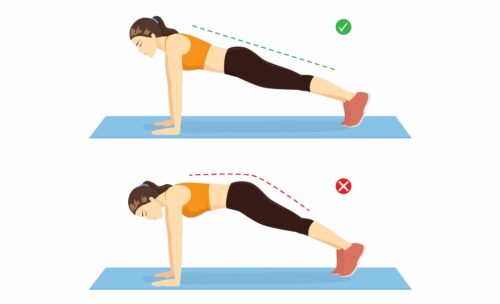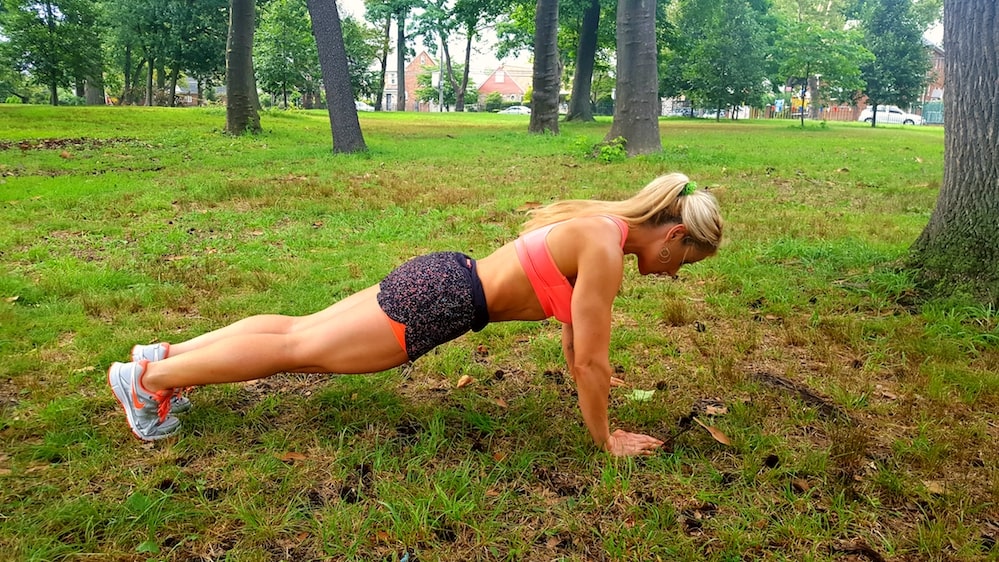Do you want to strengthen your core while engaging multiple muscles simultaneously? Try doing planks. This isometric bodyweight exercise is simple but effective.
Below we’ll look deeper into planks and we’ll cover the following:
- Muscles involved in planks
- Benefits associated with planks
- How to properly do planks
- Plank Variations
- Common mistakes when performing planks
- Video on how to do planks
- Ab exercises to complete your core workout
What Muscles Do Planks Work?
Primary Muscles
- Core Muscles: Planks work your core muscles, which include the abdominal muscles (rectus abdominis -referred to as the six-pack- transverse abdominal, the external and internal obliques, and the pyramidalis muscle), as well as the pelvic floor muscles, erector spinae, and lumbar muscles.It engages the transversus abdominis, rectus abdominis, internal and external oblique muscles.
Secondary Muscles
- Shoulders: Deltoids and some internal muscles making up the rotator cuff (supraspinatus, infraspinatus, teres minor, and subscapularis)
- Chest: The pecs are the muscles in the chest, including the pectoralis major, pectoralis minor, serratus anterior, and subclavius
- Trapezius – Triangular muscles extending over the back of the neck and shoulders
- Rhomboids – Muscles located in the upper back in between the scapula
- Gluteal muscles – Glutes
- Quadriceps – Muscles in the front of the leg
Benefits of Planks

- Fat Burning: Planks help burn more calories due to engaging multiple muscles simultaneously.
- Endurance: This exercise works on your slow-twitch muscles which enable longer endurance.
- Better Posture: They strengthen your core which helps keep your spine in alignment, strengthen your back, and improve your posture. This helps prevent injuries and gives you a more confident look.
- Less Back Pain: Planks keep your back healthy and your core strong, helping prevent and deal with back pain.
- Greater Balance: Planks work on your stabilizing muscles, making you more stable, agile, and improving your balance. This, in turn, helps you avoid injuries.
- Increased Focus: This exercise entails holding a position for a certain amount of time, which helps improve your ability to focus under tension. The longer you hold, the more focused you can become, and vice-versa.
- Versatility: Planks only require your body weight making them highly versatile and allowing you to workout anytime, anywhere, and without the need for equipment.
How to Do Planks
The idea of the plank is to keep your body perpendicular to the ground in a prone position (facing down) while you hold yourself on your hands or forearms and keep your core tight and your hips off the floor.
PLANK VARIATIONS
LOW PLANK /FOREARM PLANK: basic plank executed on your forearms ⬇️
- Start on the floor, laying on your belly
- Go on your forearms and align them directly under your shoulders
- Engage your abs, shoulders, back, and glutes, and raise your belly, hips, and legs off the floor. Position your hips in line with your knees
- This is the low plank position. Hold.

HIGH PLANK: Plank executed on your palms ⬇️
- Start on a tabletop position with your shoulders directly over your wrists
- Engage your abs, shoulders, back, and glutes, and extend your legs back into a pushup position with your hips in line with your knees
- This is the high plank position. Hold.

There are other plank variations such as Plank Jack, Reach Plank, Plank with Leg Lift on Medicine Ball, Plank Wiper, Side Plank Leg Raise, Side Plank, Sliding Plank Crunch, Plank Crunch, Plank Kick to Crunch, Plank Switch, Plank Pushup, Plank Pistol, Alternating Leg Arm Plank, Low Plank to High Plank -demonstrated below.
Plank Mistakes
- Not tightening your abs: Not engaging your abs allows other muscle groups to take over instead of allowing the core muscles to work – which are the target.
- Raised butt: Many times, people raise the butt/hips higher than necessary, which doesn’t allow the core to be properly engaged. Your body should form a straight line.
- Sagging: Don’t allow your hips, head, or shoulders to sag.
- Hands too close: Don’t put your hands too close together which can throw off your balance
- Holding your breath: Proper breathing allows you to hold the plank for longer periods and keeps your brain and lungs oxygenated.
? If you have an existing condition, you should consult with a physician to assess your current state and learn about any precautions you should take before you start exercising. If you have injured discs, you may want to avoid flexing your spine and try crunches instead.
Plank Video
Core Workout
As you can see planks have numerous benefits. You can complete your core workout with Russian Twists, Lying Leg Raises with Hip Thrusts, Sit-Ups, and Wheel Rollouts
Lift, Burn more Fat, Get Stronger, and Live Healthier!
To a Fitter Healthier You,
The Fitness Wellness Mentor



